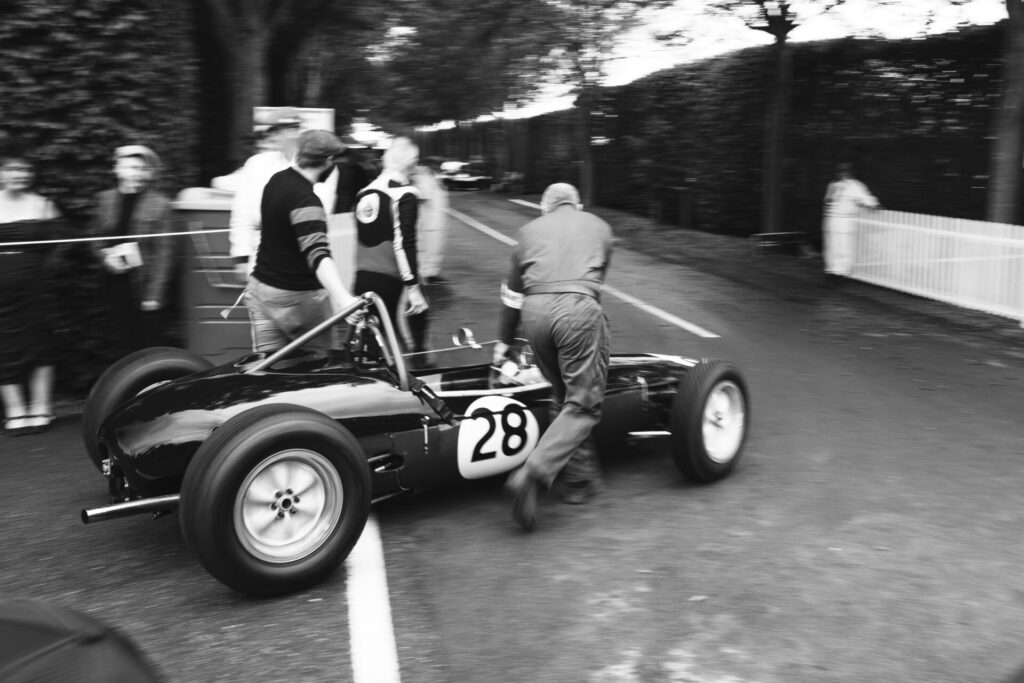By James Flashman-Fox
The commercial DNA of professional sport is shifting at pace. No longer confined to perimeter boards, shirt deals and stadium naming rights, today’s sponsorship landscape is fluid, digital-first and under increasing scrutiny from fans and stakeholders alike. In parallel, challenger sports and emerging leagues are forging new playbooks. They are more agile, more culturally in tune, and arguably better placed to connect with the next generation of fans.
For decades, the major leagues have operated from a position of dominance. The likes of the Premier League, NFL, NBA and Formula 1 built sprawling global audiences on the back of legacy media deals and blue-chip sponsors. This model offered scale and reliability, both prized commodities in the boardrooms of global brands. But the foundation is now showing cracks. Costs are escalating, the marginal returns on logo exposure are diminishing, and, perhaps most critically, fans are demanding more than just visibility from brand partners. Passive sponsorship has become a thing of the past.
In its place, we’re seeing a shift from reach to relevance. Brands now want measurable engagement. They want storytelling, purpose, and content that travels, especially in digital spaces. The rise of platforms: TikTok, Twitch and YouTube has fundamentally redefined how fans consume sport. Some argue that YouTube alone represents the future of live sports broadcasting. This world is fragmented, fast-moving and platform native. In this environment, the traditional metrics of success including eyeballs, impressions, media value, are feeling increasingly outdated.

“As a global leader in motorsport and mobility, the FIA has evolved alongside the sport, driving innovation, upholding the highest standards and championing sustainability. We are privileged to have been part of motorsport from the very beginning, and for us, partnerships go beyond commercial transactions; they represent opportunities to collaborate, advance the sport, promote inclusivity, and foster meaningful societal change. Authenticity comes from aligning these values with our partners’ goals, ensuring a lasting impact that extends far beyond the track.” – Craig Edmondson, Chief Commercial Officer, Fédération Internationale de l’Automobile
This new era requires a different approach. One that understands fandom not as a static audience to be sold to, but as a living, breathing community that values authenticity and alignment. Challenger leagues and emerging sports are showing what this can look like in practice. Whether it’s the gender-equity-led sponsorship models in women’s football, the storytelling focus of F1’s Drive to Survive (and upcoming Brad Pitt movie that goes far beyond ‘product placement), or the creator-fuelled momentum behind esports, the rules are being rewritten as I write this.
Take Red Bull’s playbook. Their model is far more than just logo placement—it’s ownership, identity and lifestyle integration. Red Bull don’t sponsor sports; they create them. Similarly, brands like Monster Energy or Gymshark are finding traction not by piggybacking on traditional rights packages, but by embedding themselves within culture, by supporting athletes, creators and unique moments that resonate with hard-to-reach communities. These aren’t incidental moves, they are intentional strategies built around authenticity, access and alignment.
Perhaps the biggest shift of all lies in the growing power of athletes and creators themselves. In many ways, they are the new ‘media’. From Naomi Osaka to Jake Paul, athlete-driven and athlete-influencer content (these are two separate groups, to be clear) is often more trusted and more widely consumed than anything distributed via a league or broadcaster. These individuals bring with them not just reach, but influence. It is easy to wonder why it took so long for the RFU to finally introduce names on the back of shirts. This athlete-led market changes the equation for brands. Increasingly, partnerships are being brokered not with teams or federations, but directly with personalities. And in challenger leagues, this model is actively encouraged. More creative freedom. More personal narrative. More flexibility. It’s not just a different commercial model; it’s a different mindset entirely.

Purpose, too, has become a defining theme. It’s not enough to be seen. Brands need to stand for something. Fans, especially Gen Z, increasingly want to know where a brand stands on the issues that matter. The days of James Hunt with a glass of champagne in hand post 1976 British Grand Prix, swathes of Marlboro logos adorning his racing suit (and let’s not forget that huge rear wing), are long gone. Environmental sustainability. Social equity. Mental health. Diversity and inclusion. Leagues that understand this are finding deeper resonance with both fans and sponsors: SailGP with its carbon-positive mandate, WNBA’s relentless push for player voice and social justice.
But this landscape isn’t without its challenges. Fragmentation means it’s harder to build mass visibility. The demand for authenticity raises the bar for activation quality. And the proliferation of platforms has made measurement of ROI complex and inconsistent. For brands, the risk of misalignment, of appearing tokenistic or opportunistic, is real. For rights holders, the challenge is to deliver partnership models that are not just financially sustainable, but culturally credible at the same time.
So, where do we go from here?
The first step is for legacy leagues to evolve from transaction to transformation. The word transformation gets thrown around a lot in the sports industry, but change has been slow at best. Partnerships must be rooted in co-creation, community engagement and shared purpose. A clear example is LaLiga’s partnership with Microsoft. Far from being a standard logo deal, this relationship is anchored in digital innovation. Together the two have developed platforms including Mediacoach and Beyond Stats, offering fans and stakeholders richer insights and deeper engagement. It’s a partnership that enhances the experience first, exposure second.
Secondly, rights holders, both David and Goliath, must invest in digital fluency. Understanding how to tell stories natively across TikTok, Instagram, YouTube Shorts or Discord is no longer optional, it is essential. LIV Golf have made huge strides in this space in recent months, unlocking the power of their athletes, storytelling and importantly ‘fun’ to propel the league forward. Formula E is also giving us a taste of what’s possible with their in-house content studio creating social-first content, tailored to each platform. Formula E’s TikTok channel has generated tens of millions of organic views alone, just one snippet of proof that a digitally native strategy can amplify reach, even in a sport without the heritage of F1, Premier League Football, or PGA Tour.

Finally, brands need to embrace nuance. Not every partnership needs to be global in scale. There is huge value in hyper-targeted activations, especially in niche or emerging sports. Having 600m followers across 7 different social media channels really means nothing if you have limited or no data to provide insights into who these fans are, and how potential brand partners can tap into tap into this set in a meaningful way. Ally Bank’s partnership with the NWSL is a standout here. Committing to a 50/50 media buy across men’s and women’s sports, Ally has activated around gender equity and purpose-led storytelling. The impact has been undeniable – viewership up, brand affinity tripled, and the league itself elevated as a cultural force.
Sport remains a powerful platform. No space commands the same level of passion, tribalism and cultural influence. But the rules of engagement have changed. The playbook is being rewritten by new leagues, new athletes, and new fans. The winners in this next era will be those who understand that sponsorship is no longer about presence. It’s about purpose, participation and partnership, on equal terms. In a world where attention and trust are the ultimate currencies, sport has a unique opportunity to lead. But only if it’s willing to evolve.